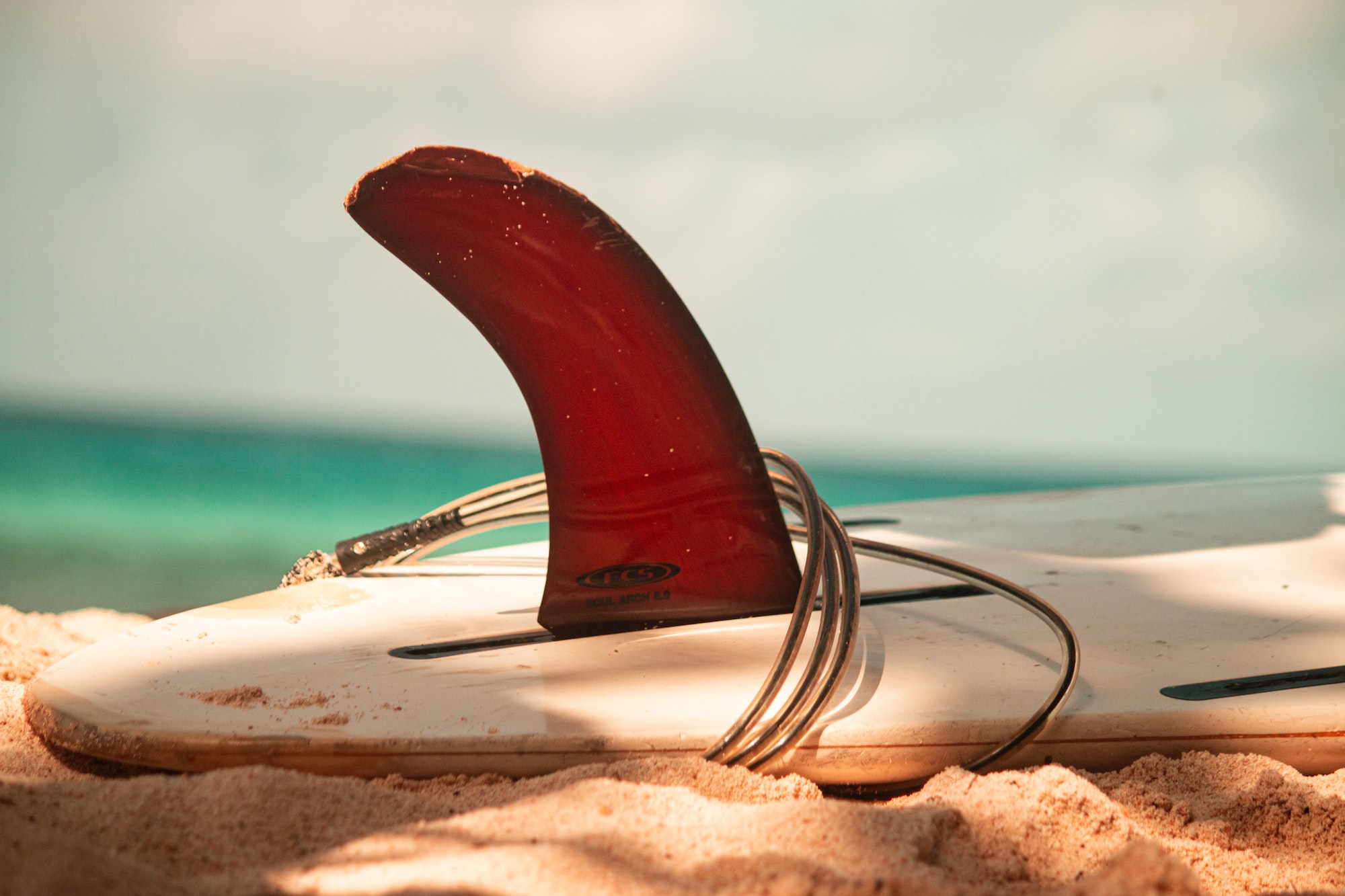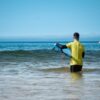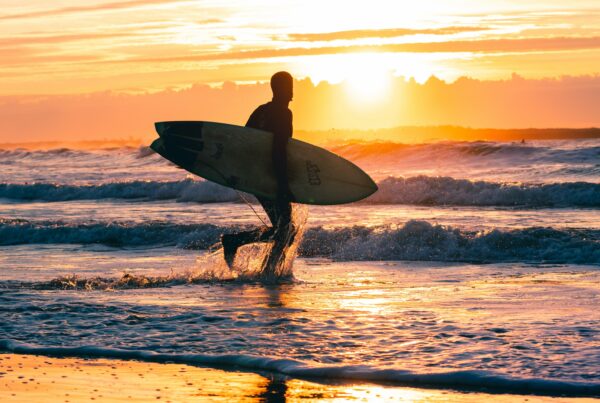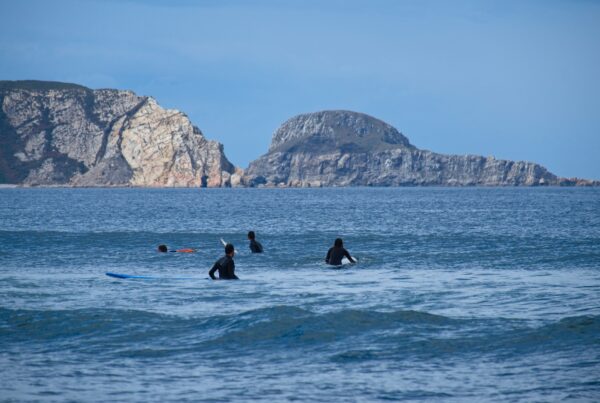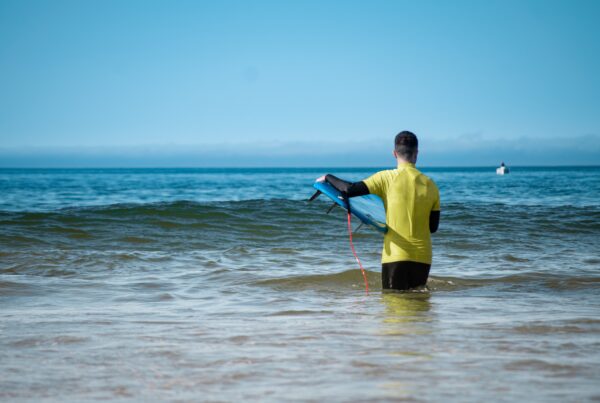Choosing the right surfboard can be a real challenge, not only for beginners, but also for advanced surfers who already excel in the water.
With the amount of shapes, lengths, weights and fin settings it’s easy to get lost and end up purchasing a surfboard that is not the best match. So, let’s dive in and see what to look after in your next big purchase decision.
Surfboard design
In the past, all surfboards were carved out of wood and were designed by a surfboard shaper. It’s still the case today, but the difference lies in the access to technology we actually have. It’s been a few years now since different software like autodesk started being used in the design of the final product.
Of course it goes out of the traditional way of making it, but this kind of program allows the producers to test the different surfboard shapes in several conditions. In the same manner, by introducing the materials used, it’s possible to test properties like buoyancy and rigidity or simulate the water flow and the breaking force.
The caveat of using more technology in the production process is that now we have thousands of options available and a surf shop just can’t keep up with all the models and their particularities. This, of course, makes the process of choosing the best surfboard, for beginners, or a pro version, much more difficult.
1. How to decide on the surfboard volume
The rule of thumb is that a surfer should ride a board that has the same volume as their body weight. Meaning, if you weigh 70kg, your surfboard should have a volume close to 60-70L. Of course bodies change, but rarely will they change drastically enough to make you buy a new surfboard every year.
However, that applies mostly to beginner surfers. Once you advance, you will find that your board, although stable, is not as responsive and agile as you would like. In that case, you will be looking for a board with a lower volume.
In short, the higher the volume of your board, the more stable and easy to use it will be. And, the lower the volume, the more technique and skill you will need, but also the more maneuverability and control it will offer.
With that in mind, your starting volume, or the one recommended if you were going for the safe and beginner friendly option would be:
In this case, you ability & weight would be calculated as follows:
Pro you’re a pro, averaging an 80 – 90% completion rate. You catch 9 out of 10 waves you paddle for and can perform complex and quick maneuvers.
Advanced surfers are able to complete complex maneuvers consistently with confidence and control. Also, catching an average of 8 out of 10 attempted waves.
Intermediate / Advanced riders are able to link moves whilst having confidence and understanding of each condition. Able to complete above average at 60-70% completion of each maneuver. catching 7 out of 10 attempted waves.
Intermediate riders are progressive surfers capable of trimming the wave face. Developing their movements whilst completing half of the attempted moves. Catching roughly half or slightly more than half of your attempted waves.
Beginner surfers are your first timers, learning to stand, focusing on their wave count.
| Weight (Kg) | Pro | Advanced | Intermediate / Advanced | Intermediate | Beginner |
| 35 & Under | 15.05 | 15.75 | 16.80 | 21.00 | 25.90 |
| 40 | 16.40 | 17.20 | 18.80 | 23.60 | 29.20 |
| 45 | 18.00 | 18.90 | 20.70 | 26.10 | 32.40 |
| 50 | 19.00 | 20.50 | 22.50 | 28.50 | 35.50 |
| 55 | 19.80 | 21.45 | 23.65 | 30.25 | 37.95 |
| 60 | 21.00 | 22.80 | 25.20 | 32.40 | 40.80 |
| 65 | 22.75 | 24.70 | 27.30 | 35.10 | 44.20 |
| 70 | 24.50 | 26.60 | 29.40 | 37.80 | 47.60 |
| 75 | 26.25 | 28.50 | 31.50 | 40.50 | 51.00 |
| 80 | 28.00 | 30.40 | 33.60 | 43.20 | 54.40 |
| 85 | 29.75 | 32.30 | 35.70 | 45.90 | 57.80 |
| 90 | 31.50 | 34.20 | 37.80 | 48.60 | 61.20 |
| 95 | 33.25 | 36.10 | 39.90 | 51.30 | 64.60 |
| 100 | 35.00 | 38.00 | 42.00 | 54.00 | 68.00 |
| 105 | 36.75 | 39.90 | 44.10 | 56.70 | 71.40 |
| 110 | 38.50 | 41.80 | 46.20 | 59.40 | 74.80 |
As for the rest of the factors, such as age and fitness, you can just use the following tables:
| Age | Factor |
| 0 – 30 | Add 0% (use 1.00 in the formula) |
| 31 – 50 | Add 8% (use 1.08 in the formula) |
| 51 – 60 | Add 20% (use 1.20 in the formula) |
| 61+ | Add 30% (use 1.30 in the formula) |
| Fitness | Factor |
| Excellent – Surfing or other training 4 times per week | Add 0% (use 1.00 in the formula) |
| Good – Surfing or other training 3 times per week | Add 5% (use 1.05 in the formula) |
| Average – Surfing or other training 2 times per week | Add 10% (use 1.10 in the formula) |
| Poor – Surfing or other training 1 times per week | Add 20% (use 1.20 in the formula) |
2. Your surfboard’s shape
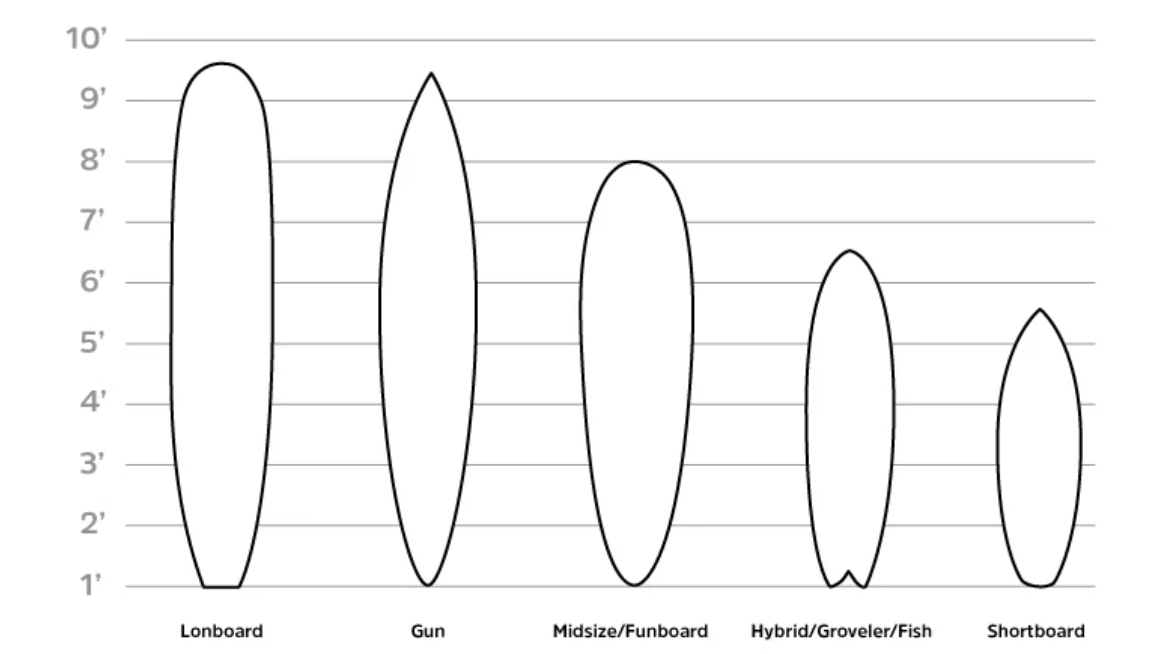
You will notice that there are thousands of types of surfboards in every surf shop. That is because there are 2 main types of noses and 6 main types of tails, meaning there are about 12 combinations. We are not going to discuss each one of them as this post would be way too long, but we will go over the main types of boards for beginner surfers and people who already have experience riding waves.
Longboard
Longboards have an incredible stability and amazing buoyancy, meaning it’s a good beginner surfboard. It will not allow you to make swift turns or any aerial tricks, but it will give you more wave time and will perform great when the swell is small.
Gun and Step Up boards
These are large, high-performance boards, similar to shortboards but with an increased size to provide better stability when dealing with monster swells.
Midsize & Funboards
A smaller version of a longboard, mainly used by people who want to learn to surf slightly bigger waves. It’s the next step after you have mastered your longboard and want to get some more maneuverability.
Hybrid, Groveler & Fish Surfboards
In many cases, these boards are thickened and widened versions of shortboards. These boards are great for daily use and for people who want to use a shortboard in small swells and little mushy waves.
Shortboards
Shortboards can be a scalpel in the hands of a skilled rider. On the dark side, they are difficult to manage in less than ideal conditions or, especially, for beginner surfers. Aerial maneuvers, tube riding, competitions, and anywhere you’d want maximum maneuverability or control is the domain of the shortboard.
3. Fin Configuration
There is no right or wrong here as the fin setup will depend greatly on your surfing style, your balance and the type of board you are using.

There are 5 main setups to choose from:
- Single Fin
- Twin Fin
- Thruster
- 2+1
- Quad
Which you choose will depend on your personal style and preferences. Choosing the right setup is important, but keep in mind, for every perk you get, there is a con, as in everything.
4. Surfboard material
Fiberglass Surfboards
Fiberglass is the classic, high-performance construction method for shaping surfboards. These boards can be somewhat fragile. The denting on the deck is somewhat normal as your body weight can compress the foam, but cracks need to be cared for to prevent waterlogging.
What you get in exchange for the fragility is the most beautiful surfboard construction as well as unparalleled performance.
Epoxy Surfboards
If you’re not quite ready for a fiberglass board, or are stocking a rental fleet, epoxy boards are common substitutes for traditional fiberglass boards. Here, the board gets an epoxy treatment. This lowers the board’s ability to flex, but handles pressure and bouncing quite a bit better.
Foam Surfboards
Foam surfboards use durable soft, closed-cell foam to wrap the deck and rails of these boards, providing incredible levels of buoyancy. Forgot to wax? You’re not likely to slip off these decks anyhow.
5. Other items to take into account
You might think you are done after choosing the right board for your body and soul and you are probably envisioning yourself riding waves in the sunset, but that’s not all! There are a couple extra items you need to take to make sure your surfing experience is just perfect.
Surfboard Wax
Essential for any new board no matter the water temperature you plan on surfing. Base wax, also called base coat, should be used as a primer for any new board. It allows for other waxes to stick to the board better. Base wax is very hard and should only be used on new, cleaned surfboards.
Traction Pads
They are extra valuable when making hard turns on a shortboard, providing grip to your back foot, and allowing you to generate power through pumping and other maneuvers
So, which is the perfect surfboard for you?
That’s a very easy question to answer. The best surfboard is the one you like and the one that fits your surfing level and style.
You can check the size, the volume, the shape, the fin configuration, everything… But the most important thing to check for is that you feel comfortable and confident while using it in the ocean.
And, if you are unsure which one fits you best, just book a surf lesson with us and ask us to try a specific board type to see what it feels like using it!

